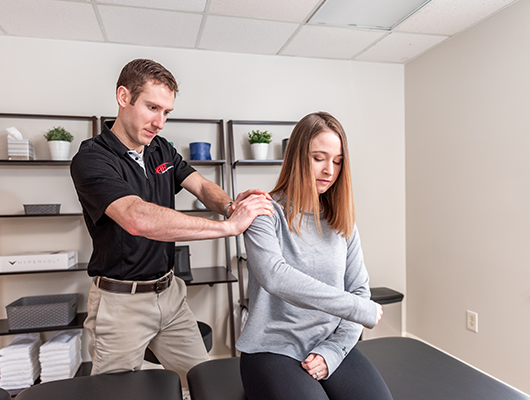Physical Therapy
Movement Assessment
Using advanced screening techniques, such as the Selective Functional Movement Analysis (SFMA), we can determine where your movement patterns may be breaking down and causing injury. This allows us to diagnose the source of the problem, rather than just chasing the symptoms.
Advanced Manual Techniques
Active Release Techniques
Considered the gold standard of soft tissue treatment, ART is used to assess and treat muscle, ligament, and tendon dysfunction. During an ART treatment, you will move a specific muscle or joint through it’s full range of motion while the practitioner applies a targeted pressure to the structure of consequence. This technique results in a reduction of adhesions in the soft tissue, while retraining your neuromuscular system in proper movement patterns.
Graston Technique
Used for over 30 years, Graston involves the use of instruments to help reduce adhesions and restrictions in soft tissue. Through the mechanical pressure applied with the Graston tool, the practitioner is able to increase local circulation and decrease scar tissue in an injured area. Graston is a very effective tool in common injuries such as tennis elbow, plantar fasciitis, shin splints, and patellofemoral dysfunction, among many others.
Dry Needling
A treatment style that has been growing in popularity, Dry Needling is a very potent tool for addressing both musculoskeletal and neuromuscular deficits. Dry Needling Technique uses a very fine filament needle to create a micro lesion in the damaged tissue. This process results in inhibition of the reflex arc from the nervous system to the tissue, normalizing the inflammatory process, and centrally mediating the pain. The mechanical and neuromuscular effect provides an environment for the body to heal and reduce pain.
Kinesiology Tape
Kinesiology tape is a flexible tape popular in the medical community, as well as amongst professional athletes. The tape, when applied with a specific stretch, decompresses the tissue under the tape and allows for increased circulation. This helps reduce areas of inflammation and primes muscles for movement. The tape also has an effect on the neuromuscular system and reduces pain by changing the stimulus the brain is receiving from an injured area (similar to when you instinctively rub your elbow after whacking it). At AMPT, we use RockTape because, with an industry leading 180% elasticity, it is the most effective tape at increasing local circulation while not restricting movement.






